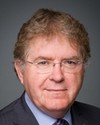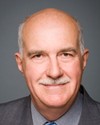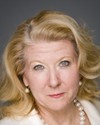Thank you very much.
Let me introduce myself. I'm very pleased to have the opportunity to speak to you today on my experiences in Afghanistan with respect to the minerals industry and the mineral potential of the country.
I'm speaking today on my own behalf, as a professional geologist with more than 30 years of professional experience, with graduate degrees in both geology and economics. I've worked in more than 80 countries over that time span, so I guess I've seen a pretty broad spectrum of various qualities of life, lifestyles, and mineral deposits as well.
I'm currently the executive vice-president for Hunter Dickinson Inc., which is a mining and exploration and development corporation based here in Vancouver. We've been around for more than 25 years, with operations on four separate continents and more than 6,000 employees around the world. Our largest operation in Canada is the Gibraltar mine in British Columbia, which is the second largest copper mine in Canada. We take great pride in achieving large returns in value to our shareholders.
I'm also here as the director of the Prospectors and Developers Association of Canada, or the PDAC. The PDAC is a national organization comprising more than 7,000 members representing a range of companies and individuals in the mineral exploration and development industry. Our members include prospectors, geoscientists, environmental consultants, mining executives, students, people working in the drilling industry, financial and legal institutions, as well as the various other support industries that go along with mining.
The association's corporate members include junior mining and exploration corporations, major production companies, and organizations providing services to the industry. Our annual convention, which is coming up shortly, is the largest in the world, annually attracting about 25,000 people from all continents to Toronto.
I'd just like to give you a little bit of background on my perceptions of mining in Afghanistan and going forward from there to the mineral potential and so on.
Afghanistan, as you're well aware, has been a crossroads for trade and commerce over centuries, while in my perspective it was also a traffic jam or perhaps even a train wreck for geology. Virtually every continent bumped into that little country over the eras of geologic time, so that it's virtually a totally mountainous country that represents each mountain collision and continental collision over those ions.
We were there as Hunter Dickinson, as part of a tender process to evaluate and make an offer to develop the Aynak copper project, which is a world-class copper project in Logar province, about 40 kilometres to the southeast of Kabul. We were one of 13 companies from 13 countries that participated in this tender process, and we were the only Canadian entrant in this activity.
The approach we took was a fully integrated approach that brought together technical, environmental, and socio-economic programs. I personally built alliances with the EDC, the IMF, BCIT, Caterpillar, and the Aga Khan Foundation, among many others, in trying to put together a fully integrated package that would be beneficial not just to the mining project but to Logar province and ultimately to the entire country of Afghanistan.
Support was provided through the Canadian embassy--and was very much appreciated--as well as by receiving letters of support from Prime Minister Harper and a number of ministers to their counterparts in the ministry in Kabul.
One of the highlights was the facilitated meetings held with local community leaders--I guess you could say, if you go to the news media, they would be called warlords, but we call them community leaders--to inform them and increase their capacity for understanding what a mining operation might be in their region. When I went to them--and I met with 25 individual community leaders--they did not even have an idea that there was potentially a world-class mining opportunity being developed in their region, and they were very much surprised and were very appreciative of the fact that I laid out the entire program for them so they could have some comment.
On the mineral potential of Afghanistan, as I mentioned, it's the crossroads of geology as well as commerce.
In 2010 the U.S. Geological Survey put out a report, which you're certainly well aware of, that identified vast mineral wealth in the country. Those were broad estimates, in my perception. They would not conform in any way to a legal definition of mineral resources or reserves. They're meant to be guidelines for governments and public sector companies that might be interested in exploring developed mineral resources in the country, but by no means could they be used to develop a technical report that would be useful for corporate finance and that sort of thing.
Challenges to working in Afghanistan were manyfold. Logistics would be right at the top of the list. In fact, when I asked the community leaders how they would rank their most needed and desired components to a program that our company might implement in the area, it actually surprised me initially, but when I thought about it in retrospect, logistics was their top priority. They were looking for bridges and roads, so that they could better access their countryside and better access trade for and among their villages. Naturally, other things were improvements in farm capability, employment, and so on.
Other challenges for working in Afghanistan include cultural differences. Yes, a western culture is quite different from a central Asian culture, but again, it's cultures within cultures in Afghanistan, because of the normal tribal behaviour the people live under. We were looking at improving dramatically the skills and capacities of the people.
That's why I brought in groups like BCIT, who are ready to establish, essentially, a branch campus in the vicinity of the Aynak copper mine in order to train not just people for exploration and geology but also normal things like pipe fitting, electricians, mechanics, and so on. These are things that we believe not only could be useful at the mine but then could have impacts that would spread across the country as an amoeba might.
Energy would be a tremendous challenge in that country. Virtually all the energy is coal-fired or through diesel power plants on a relatively small scale. We were looking at having to probably build a coal mine in addition to a coal-fired power plant in order to make a mine like Aynak work.
Transportation, as I mentioned, was the top priority for the local people. Security goes without saying.
One of the things I was intending to provide right from the beginning was an employment program that would utilize the current skill levels of the people on site. If you're familiar, most everything is built on an adobe basis. I was intending to essentially create a compound encircled by an adobe wall, not so much to keep people out but in order to provide several thousand people with jobs for a couple of years. People would therefore see immediate impact by our presence in the country.
Then there was the need to just build mutual trust with the people. That's a challenge in its own right. I thought by going to the people the way we did—and we were the only company that went out into the countryside to meet with their community leaders—we could start building those hands across borders with them.
Mining is a contributor to the future of Afghanistan. My true belief is...comparing mining in Afghanistan, you might compare it to developing the infrastructure and economies of the territories and Yukon. Basically, there is not a lot of alternative economy out there. Yes, small-scale farming is available, but it's subsistence farming.
Similarly, the only way to bring in high-level skills, high-level technology, is through natural resource development. Bringing it in and bringing the people to the level that would be required for them to be the participants and leaders in that area were keys.
We had in mind, by year 10 of a mining operation at Aynak, that there would perhaps be less than five expatriates in Afghanistan running that mine. Everybody else would be brought up by the bootstraps and have increased capacity and education such that they would be running the mines.
How would I place the Canadian mining industry and government in developing Afghanistan's future economy? I'd look at it from a personal and future financial security basis. Establish security in the area and mining companies will come to Afghanistan. Without that, the risk to not only personnel but also to investment is just too high. Our exploration funds and our development funds are too few and precious to be able to gamble them in a fashion where there's not security of tenure and security of life.
It would be helpful to have political risk insurance should mining companies enter the country. Other incentives that I'm certain governments can come up with that are beyond my capability to suggest would also be things we would consider.
In summary, I'd like to say Hunter Dickinson viewed Aynak and the Aynak copper project as more than a technical and economic activity. We viewed our efforts there as the beginning of a country-building effort. A well-run mining operation in Afghanistan could form the foundation stone from which the first non-conflict, non-drug-related economy could be based in that country, and it could grow and spread across the country for many decades to come.
I thank you for your time.



